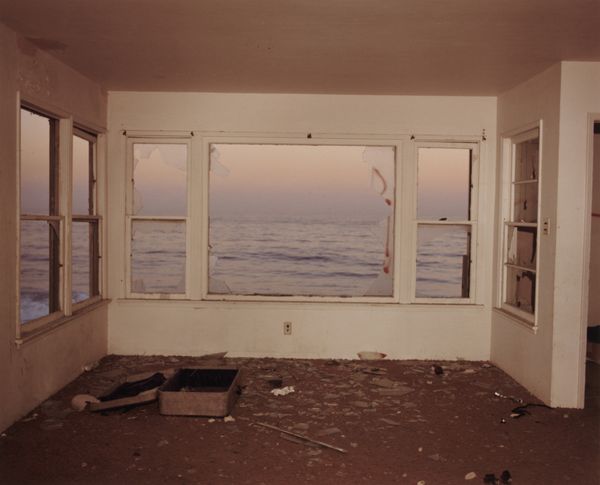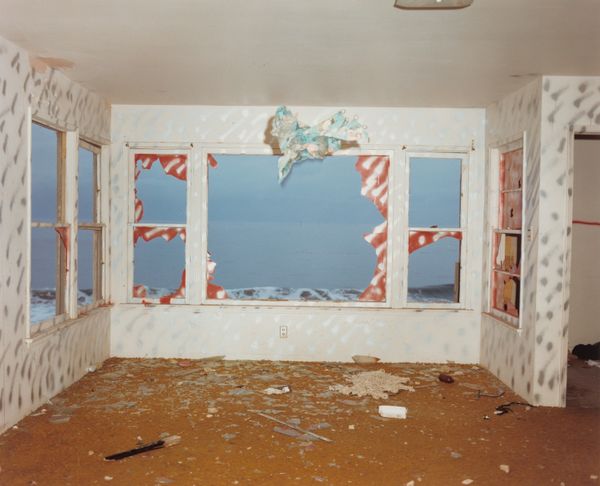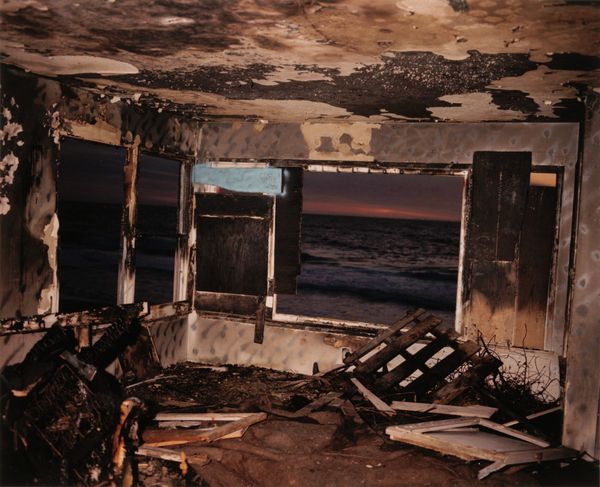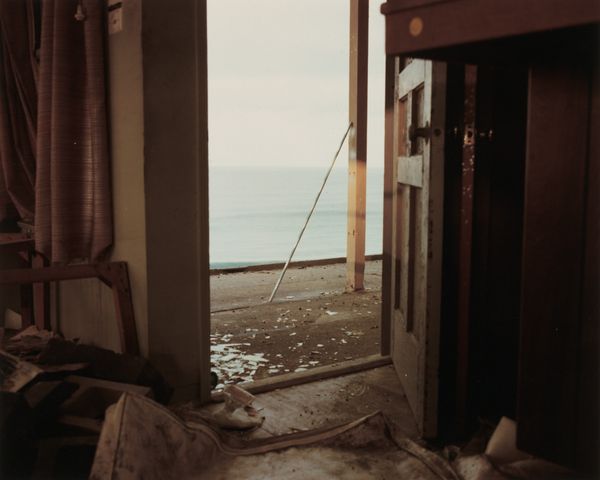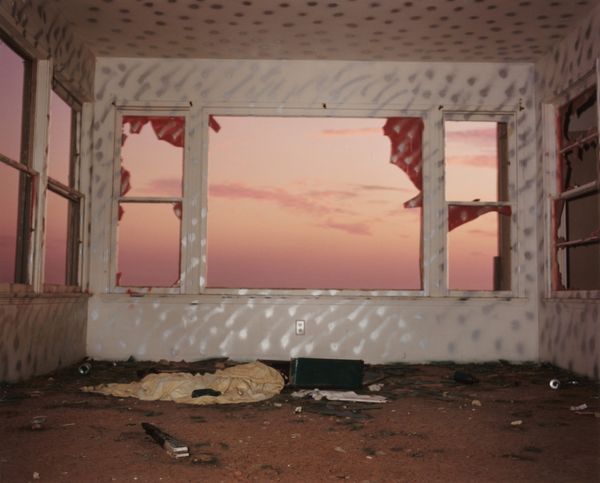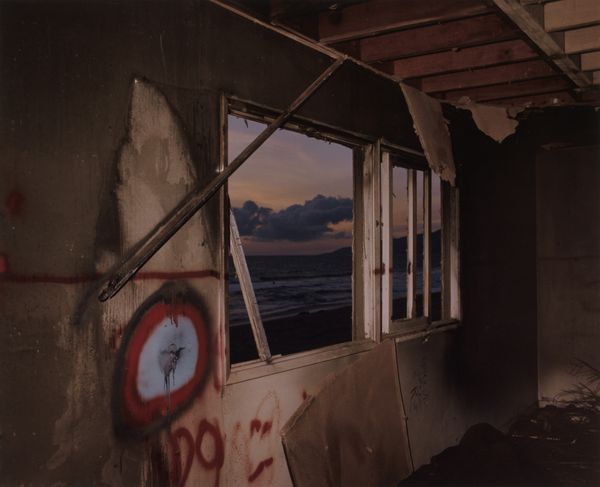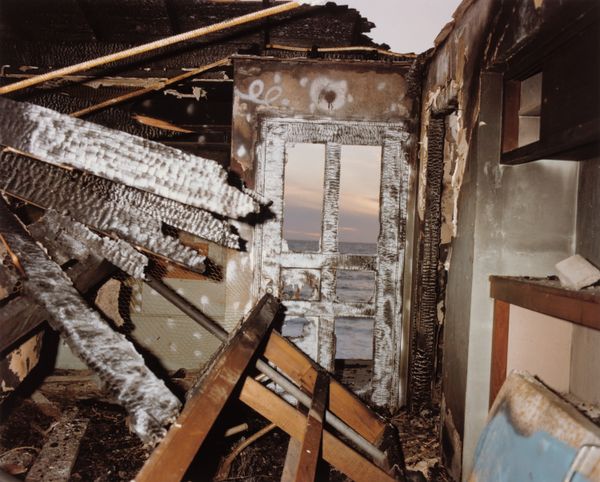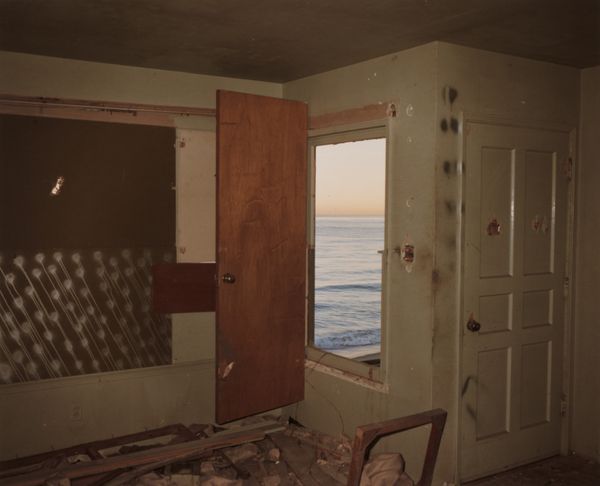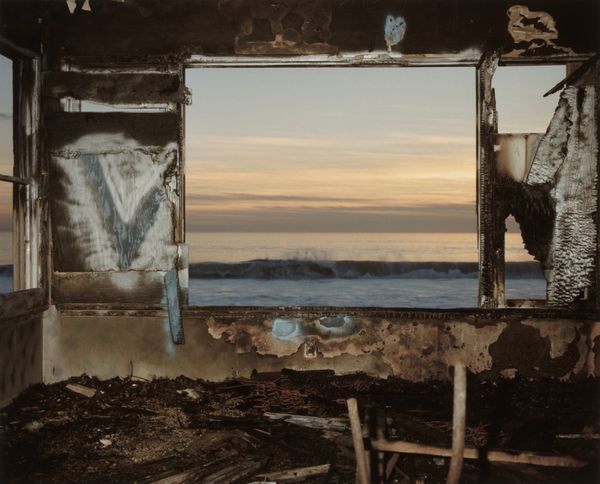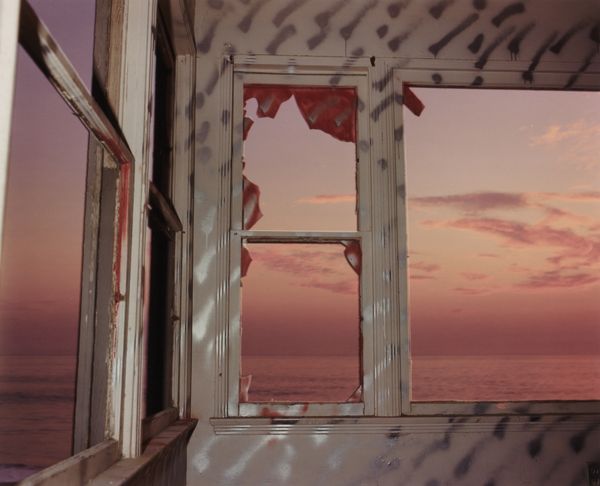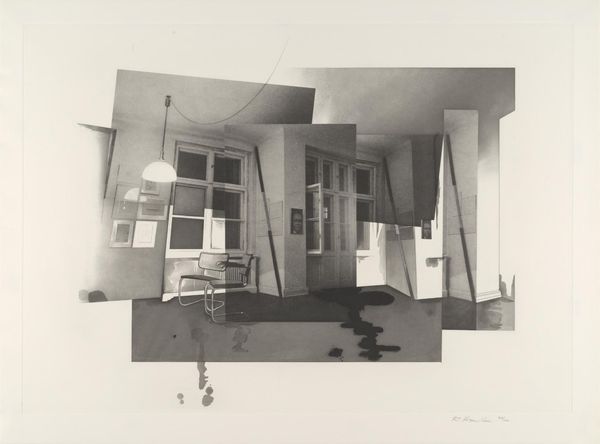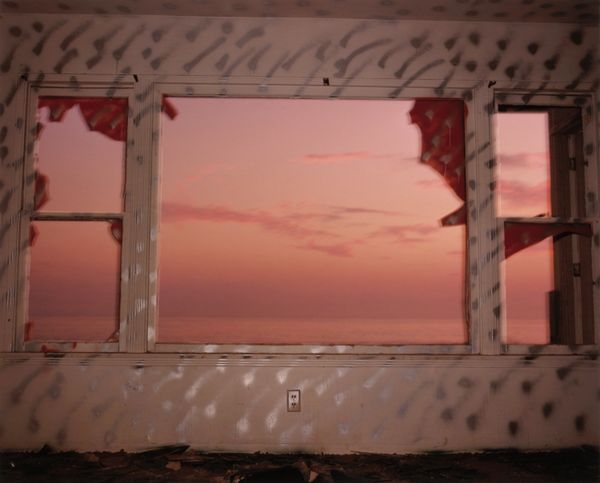
photography, site-specific
#
conceptual-art
#
postmodernism
#
landscape
#
photography
#
derelict
#
urban life
#
urban art
#
site-specific
Dimensions: image: 24.77 × 30.48 cm (9 3/4 × 12 in.) sheet: 27.94 × 35.56 cm (11 × 14 in.)
Copyright: National Gallery of Art: CC0 1.0
Editor: John Divola's "Zuma #1," from 1977, presents a photograph of what seems to be an abandoned room overlooking the ocean. There's a haunting stillness, a stark contrast between the derelict interior and the vastness of the sea. How do you interpret this image, particularly considering its historical context? Curator: What strikes me immediately is the interplay between private and public space, interior ruin versus the endless ocean. As a historian, I see this work as engaging with the burgeoning postmodern critique of institutions and social structures in the 1970s. Think about the economic shifts, urban decay, and anxieties present then. Editor: So, the derelict room isn’t just about physical decay? Curator: Exactly. The site-specific nature of Divola's work highlights how social forces directly impact lived environments. Abandoned spaces often reflect broader socio-political narratives. Consider who might have inhabited this space and why it's now vacant. What does this image suggest about urban life at the time? Editor: It's interesting to consider the institutional critique. The ocean feels like a constant, an escape, perhaps highlighting the failure of the room as a functional, lived-in space sanctioned by those very structures. Curator: Precisely. Photography, as a medium, plays a crucial role here. It presents a document, a seemingly objective view of this decay, inviting the viewer to question what societal narratives contribute to the decline or neglect captured in this work. Divola’s blending of conceptualism and landscape reframes how we see social landscapes. Editor: That's a new perspective for me; it’s not just about pretty scenery but also about the narratives embedded within these locations. Curator: Ultimately, works like "Zuma #1" reveal that art’s public role is intertwined with critiquing and exposing social conditions through visual imagery, inviting ongoing reflection. Editor: I will definitely remember to consider how social structures and settings come together in artwork!
Comments
No comments
Be the first to comment and join the conversation on the ultimate creative platform.
